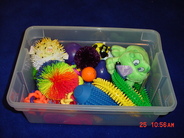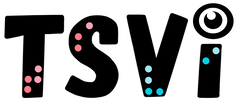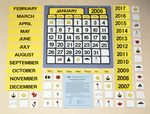- Home
-
Learn
- History of VI >
- Legislation & Laws >
- Vision Professionals >
-
VI Program Resources
>
- Program Printables
- Itinerant Teaching Tips
- Year at a Glance
- VI Program Handbook
- Caseload Analysis
- Organization & Time Management
- Professional Development
- Teacher Standards
- Professional Ethics
- Awards & Recognition
- APH Scholar Program
- Professional Organizations
- Certification Organizations
- Dealing with Challenges
- Professional Publications >
- Relatable Books for All Ages >
- Family Resources >
- Plan
- Basics
-
Teach
- Teaching Strategies >
-
Compensatory Skills Instruction
>
-
Social Skills
>
-
Self Determination
>
- Body Image & Acceptance
- Making Personal Goals
- My Vision Presentation
- My Self-Description
- Create a Personal Data Sheet
- Disclosure Decision
- Disability Statement
- Requesting Help
- Fighting Fears
- My Circle of Support
- Personal Responsibility
- Advocate for Safe Enviroments
- Having Picture Taken
- Coping with Change
- Aging Eyes
- Physical Characteristics
- Political Activism
- Laws Regarding Persons with Disabilities
-
Sensory Efficiency
>
-
Independent Living
>
- Orientation & Mobility Instruction >
- Recreation & Leisure >
-
Career & Vocation
>
-
Grow
- Complete Set Bonus >
-
Recorded Presentations
>
- Webinar: Tips for Being a "Physically Fit" TVI
- Webinar: The Art of Teaching the ECC
- Webinar: Virtual & F2F Strategies
- Webinar: Foundations of Teaching the ECC in the Age of Virtual Instruction
- Webinar: Itinerant Teaching Strategies
- Webinar: Using Themes to Teach the ECC
- Webinar: Conducting a FVLMA
- Webinar: Selecting the Right AT
- Webinar: Developing SMARTER Goals
- Webinar: Determining Service Intensity Using the VISSIT
- Webinar: Activities to Teach the ECC
- Webinar: Accessible Content for BLVI
- Webinar: Accommodations for VI
- Webinar: MIMO Strategies & Activities
- Webinar: SIDPID Strategies & Activities
- Webinar: Standard Course of Study Strategies & Activities
- Webinar: Job Tasks for Job, Career & Life
- Shop
- Jobs
Classroom Morning MeetingBy: Carmen Willings
teachingvisuallyimpaired.com Updated June 15, 2024 Gathering or group times are wonderful opportunities to incorporate concepts, work on conversation skills, refine sentence construction, and to address self-concepts and interpersonal skills. There are simple adaptations that can be made to this time to make it accessible for students who are blind or visually impaired. During these gathering times, provide the student with preferential seating based on their visual field and visual needs. For most students, front and center is the best location. This, however, isn’t always the rule. Some students will benefit from sitting to the left or right of the instruction if they have a visual field loss or an eccentric gaze.
Fidget Box
Keep in mind that attention spans are short. Consider shortening gathering time to match the attention span of the students and schedule several different group times instead of one long gathering time. You may find that many students, particularly those that are visually impaired, can have difficulty attending or have inappropriate mannerisms during group times, when they are not actively engaged in an activity. Be prepared with a shoebox of fidget toys and provide one to each student that tends to fidget. Check with the occupational therapist as to whether or not a student would benefit from a weighted vest, lap blanket, or cushy seat during this time. Reward good listeners and those who are on task with gathering time jobs (help place the number on the calendar, check the weather, etc.)
Morning GreetingVerbally welcome or sing songs to greet students (ex. We’re So Happy You’re Here Today). Practice social exchange. "Good Morning, ____." Student responds with reciprocal greeting. Encourage students to use appropriate posture, eye contact (or face in the correct direction), volume, and dictation when communicating. Bring the "sign in chart" to the group area. Have student’s identify who is at school today based on signatures. Find matching names to place on attendance board – use symbols that match current topic OR for older students, use name badges or time sheets similar to what is found on work site.
Be sure to use the names of all the students when talking to them. That way a student that is visually impaired won’t mistakenly act on an instruction or comment that was intended for another student. Avoid using gestures alone (or facial expressions) for managing class behaviors unless you pair each with a verbal statement. The morning group time is a good time to encourage the student with low vision to use their vision by looking at themselves in a mirror during morning greetings or visually discriminating who is at school. Similarly, students with limited vision can practice their auditory memory and discrimination by identifying voices and determining who is missing. (Keep in mind the use of a mirror may not be the best option for all students, particularly for students with cortical visual impairment as the face is very complex and any classroom visual clutter is reflected in the mirror). You may choose to wear a silly hat, a scarf, or funny glasses to draw the student’s attention toward your face and visually scan to determine what is different about you.
Menu CheckRead the school menu for the current day using information gained during calendar time. Identify the daily choices. Encourage students to select their meal choice for the day if applicable or indicate that they brought their own lunch. Have the students locate their name on tags (using their symbol or print or Braille) and place them on a pre-made chart indicating buying or packing. Use this opportunity to interpret data and determine if there are more packing or buying, etc.
Calendar TimeCalendar time is the perfect time to talk about the days of the week, the month, the season, the year, and upcoming special days such as birthdays and holidays. During calendar time, use a high contrast calendar with minimal visual clutter, large print and braille such as the classroom calendar from APH. During the daily calendar time, have the student locate the number card to place on their calendar and incorporate the concepts of yesterday, today and tomorrow. Consider singing a yesterday, today and tomorrow song to the tune of Frere Jacques.
Example: ___day, ___day, ___day, ___day, all day long, all day long. Yesterday was _____, tomorrow will be _____, oh what fun! Oh, what fun! Pause for the student to fill in the blank as far as what day was yesterday and what will be tomorrow. Consider providing individual calendars for students with tactually defined spaces (also available from APH) to glue numbers on, one day at a time. Have the students’ rote count or tap out count up to current date, point to each number as you say it. Consider providing individual calendars for each students. Provide the students with a number card to place on their calendar OR encourage them to write the correct number on their calendar. This is a natural time to incorporate the concepts of yesterday, today and tomorrow (ex. Yesterday was Sunday, today is Monday, and tomorrow will be Tuesday).
Discuss the Day's PlanBriefly review class and individual schedules to prepare the students for the days activities. Review the chore chart to determine responsibilities for each student for the day. Introduce or review the current topic/unit. Present materials related to the topic and point out how an object feels, what it is used for, or how it relates to some other object that your student is already familiar with. This is a good time to introduce any new vocabulary words related to the topic. Encourage students to help determine meaning of unknown words through use of classroom dictionary. When applicable discuss how some words can sound alike but have different meanings.For older students, use the classroom thesaurus to locate other words that have similar and opposite meanings. Classify the objects or words into categories.
Job Chart ReviewThe ability to perform classroom chores or jobs will prepare the student for being a contributing member of the classroom, homes, and community. It also lays a foundation for job related skills and employment later in life. It does take more time, and generally takes a lot of patience when instructing a student in these goals, but it will payoff over time and can lead to a self-confident, organized adult. Remember that plenty of experiences with real objects will help a student that is visually impaired develop an awareness of shape, size, texture, softness, temperature, weight, and other features of objects.
Some chores typically considered household chores can be taught and practiced within the classroom or school. Everyone should be expected to participate in basic chores on a daily basis such as hanging coat on hook or on a hanger, putting toys, materials and belongings away, placing trash in the trash can, sorting recycling. Create a classroom chore chart with a variety of chores that students can have turns being responsible for. Typically students will look forward to having classroom responsibilities. Refer to Classroom Jobs for suggestions of chores. Weather CheckSelect one of the students to be a weather reporter. With the assistance of an adult or peer buddy, have the student go outside to check the weather, and report back to the class. Add data to the individual or the classroom weather chart comparing the weather of the week and/or month. Make the activity multisensory by encouraging the weather reporter to select what is needed based on the weather they observed.
In a weather bin, place:
|
History of vi
Visual Impairments
Vi organizations & Agencies
VI book resources
VI Professionals
Professionalism
Instructional Planning
Professional Publications
Educational Programming
Individual Learning Differences
referrals
Medical vision exams
fvlma
additional evaluations
service planning
writing goals
compensatory skills
Guiding Principles Functional Skills Community Based Experiences Concepts to Teach Access to Instruction Organization & Study Skills Time Management Virtual Instruction Movies & Assemblies Lectures & Instruction Board Work (Chalk, White, etc.) Daily Schedule Morning Meeting Weather Check Dramatic Play Blocks Numbers & Counting Cranmer Abacus Instruction Algebra Geometry & Spatial Sense Measurement & Data Early Literacy Experiences Create Tactual Books Reading Instruction Reading Efficiency Science Adaptations Social Studies Adaptations Communication Modes Accessible Educational Materials Individual Schedules & Communication Cards Adjust Lighting Large Print Optical Devices for Near Optical Devices for Distance Optical Device Use Photocopying Font Legibility Increase Contrast Pictures & Worksheets Keyboarding Instruction Word Processing and Shortcuts Navigate Computer w/o a Mouse Braille Code Braille Instruction Braille Instruction Materials Writing Braille Summer Reading (braille) Signature & Handwriting Nemeth Braille Code Tactile Graphics Guidelines Creating Tactile Graphics Tactile Graphics Instruction Teacher Made Materials Labeling System assistive technology
Overview of Assistive Technology VI AT Resources Non-Optical Low Vision Devices Video Magnifiers Video Magnifier Instruction Screen Enlargement & Readers Low/Med. Tech Tactual Devices Notetaker Instruction Braillewriter Repair Tactile Graphics Technology Braille Technology Auditory Access Devices Accessing Audio Books iPads as Instructional Tools Making iOS Device Accessible iOS Accessibility Resources VoiceOver Apps for VI Note Taking apps Apps for Accessing Books Identification Apps Navigation & Location Apps Braille Apps Magnifier Apps Sound Making Apps Cause & Effect Apps Vision Skills Apps Apps for Early Learning Read to Me Story Apps Apps for Communication Android Apps for VI sensory efficiency
Sensory Input Encourage Use of Vision Sensory Area & Rooms Lightbox Use Sensory Activities for Students with Multiple Disabilities Sensory Tables Visual Efficiency Skills Visual Attend and Scan Activities Visual Tracking Activities Visual Discrimination Activities Visual Motor Activities Tactual Readiness Developing Skillful Hands Auditory Readiness Listening Skill Instruction independent living
orientation & Mobility
career education
recreation & Leisure
self determination
|
|
Teaching Students with Visual Impairments LLC
All Rights Reserved |
- Home
-
Learn
- History of VI >
- Legislation & Laws >
- Vision Professionals >
-
VI Program Resources
>
- Program Printables
- Itinerant Teaching Tips
- Year at a Glance
- VI Program Handbook
- Caseload Analysis
- Organization & Time Management
- Professional Development
- Teacher Standards
- Professional Ethics
- Awards & Recognition
- APH Scholar Program
- Professional Organizations
- Certification Organizations
- Dealing with Challenges
- Professional Publications >
- Relatable Books for All Ages >
- Family Resources >
- Plan
- Basics
-
Teach
- Teaching Strategies >
-
Compensatory Skills Instruction
>
-
Social Skills
>
-
Self Determination
>
- Body Image & Acceptance
- Making Personal Goals
- My Vision Presentation
- My Self-Description
- Create a Personal Data Sheet
- Disclosure Decision
- Disability Statement
- Requesting Help
- Fighting Fears
- My Circle of Support
- Personal Responsibility
- Advocate for Safe Enviroments
- Having Picture Taken
- Coping with Change
- Aging Eyes
- Physical Characteristics
- Political Activism
- Laws Regarding Persons with Disabilities
-
Sensory Efficiency
>
-
Independent Living
>
- Orientation & Mobility Instruction >
- Recreation & Leisure >
-
Career & Vocation
>
-
Grow
- Complete Set Bonus >
-
Recorded Presentations
>
- Webinar: Tips for Being a "Physically Fit" TVI
- Webinar: The Art of Teaching the ECC
- Webinar: Virtual & F2F Strategies
- Webinar: Foundations of Teaching the ECC in the Age of Virtual Instruction
- Webinar: Itinerant Teaching Strategies
- Webinar: Using Themes to Teach the ECC
- Webinar: Conducting a FVLMA
- Webinar: Selecting the Right AT
- Webinar: Developing SMARTER Goals
- Webinar: Determining Service Intensity Using the VISSIT
- Webinar: Activities to Teach the ECC
- Webinar: Accessible Content for BLVI
- Webinar: Accommodations for VI
- Webinar: MIMO Strategies & Activities
- Webinar: SIDPID Strategies & Activities
- Webinar: Standard Course of Study Strategies & Activities
- Webinar: Job Tasks for Job, Career & Life
- Shop
- Jobs



